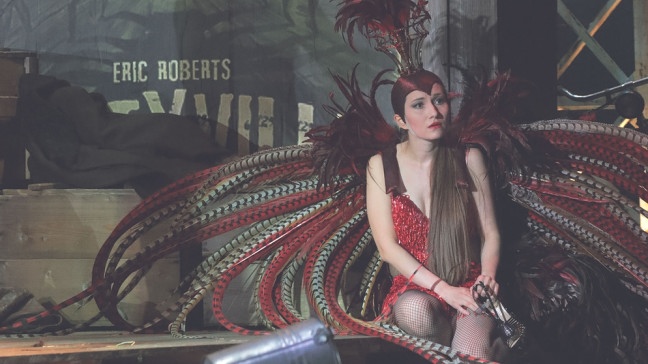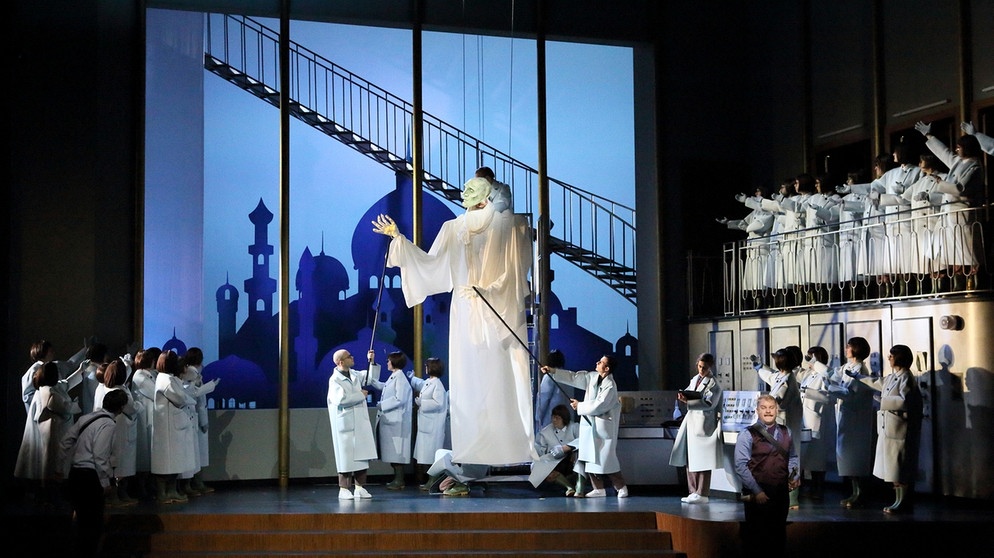Ernst Krenek's Karl V op 73 at the Bayerisches Staatsoper, with Bo Skovhus, conducted by Erik Nielsen, in a performance that reveals the genius of Krenek's masterpiece. Contemporary with Schreker's Die Gezeichneten, Schoenberg's Moses und Aron, Berg's Lulu, and Hindemith's Mathis der Maler, Krenek's Karl V is a metaphysical drama, exploring psychological territory with the possibilities opened by new musical form. Its descendants include Dusapin,BeatFurrer and Ferneyhough. This opera and, indeed, most of Krenek's work before he left his roots, confronts the anguish of a world in chaos : the certainties of the Old Order replaced by unprecedented and often dangerous change. After the end of the First World War, Austria was no longer part of an Empire, and Austrians, like Krenek, had to reconsider their place in the world. Please also see my piece on Krenek's song cycle Reisebuch aus den österreichischen Alpen, where the composer assesses Lieder at a time when the Nazis were just coming to power. Krenek's opera isn't an examination of the past but a commentary on his own times, and is still prescient in our own.
Krenek's Karl V is based on the last hours of the life of Charles V, Hapsburg King of Spain and the Americas, Holy Roman Emperor and conqueror of the Turks: the first multi -national world empire, which easily surpassed in scale the original Roman Empire. It prospered through war and political intrigued, fuelled by the brutal exploitation of other empires across the world. Yet., after a long and eventful reigh, Charles V has abdicated, of his own will, and retreated to the monastery San Jerónimo de Yuste. Yet he can find no peace. Instead, he faces the greatest challenge of his life : how will he face his conscience before God ?
Krenek's Karl V isn't realistic narrative, but an ethical and philosophical exploration, with words and music. Structurally the opera operates on multiple levels and multiple dimensions, constantly moving back and forwards in time. Since Karl V predates Berg's Lulu by several years, Krenek could have invented opera as cinema. Certainly he, like Berg, was interested in modern art, modern ideas and the movies. Just as in film, orchestral music occurs mainly at critical junctures where voices are stilled, such as the beginning of the final act. Though Krenek uses dodecaphonic form, Karl V connects to devotional practice which would have been familiar to the devout. Krenek also employs Sprechstimme throughout to emphasize philosophic ideas. Singing, in the normal sense, would distract, and normal speech would be too mundane. Eventually your ears adjust and the Sprechstimme becomes effortlessly natural.
In his sanctuary, Charles hears the voice of God himself, calling him to account. Thus Skovhus is costumed, in this Fura dels Baus productioned directed by Carlus Padrissa, costumes by Lita Cabellut, Skovhus is dressed not as a monarch but as a juggler whose cap has pointed horns on his head, like a crown seen askew. Before God, no mortal is mighty.Audiences who insist that Karl should be dressed as a king just won't get that, but that's their loss. In Krenek's libretto (which he wrote himself), images of Time and Destiny recur : thus the images of clocks, globes, glass (strong but breakable) that inform the staging. The opening sequence is astonishing - the acrobats and dancers that are La Fura dels Baus's forte, emerge from the darkness, moving, twisting and re-forming. There is purpose behind this, almost impossible to achieve with quite the panache we saw here. This represents Titian's painting The Last Judgement, which Charles V treasured. What could be more appropriate for Charles's own Judgement ? If some modern audiences don't like cultural or intellectual references, maybe Art is beyond them. Or God, for that matter. Significantly, Krenek mentions the painting in the libretto : it is the cohesive image that pulls everything together.
With his confessor Juan de Rega (Janus Torp) beside him, he examines his conscience through a series of vignettes, symbolized by key figures in his past. His mother Juana (Okka von Dammerau) appears. Though Juana was Queen of Castile and Aragon, she became insane : so much for wealth and power. Charles relives an event where he's given an apple, within which there is a worm : an allegory if ever there was one. Charles re-encounters Martin Luther (Michael Krauss) who defied the Pope. The Reformation that followed was the beginning of the end for the Holy Roman Empire, and indeed of Hapsburg hegemony in the Netherlands and German-speaking countries. Yet Charles did not condemn. In the opera, he refuses to desecrate Luther’s tomb. Will this act of decency balance the damage ? Charles is surrounded by enemies : from within the Church, from France and from the Turks. His sister Elenore (Gun Brit-Barkmin) appears. He arranged a dynastic marriage for her with Francis I (Wolfgang Ablinger-Sperrhacke) of France, but it brought her sorrow, not happiness. It didn't bring peace, either. Francis made an alliance with Suleiman and the Turks against Austria. That, too, is on Charles's conscience, though Elenore later hints at another more secretive trauma : while in France, Charles had some kind ofvsexual encounter. Since Charles had been devoted to his wife Isabella (Anne Schwanewilms) and esteemed chastity, that sin might have weighed more heavily on Charles than on other men, like the less moral Francis. Charles responds tenderly to his vision of Isabella, but she's long dead, caged in a frame that suggests a skeleton. Pizarro ( Kevin Connors) returns with plunder from the Americas. Charles knows this gold was won by bloodshed. Could he have changed anything ? Another dilemma : wealth or guilt. Finally, Charles cracks and has a seizure and the First Part is brought to an abrupt end.
In the Second Part, Charles lies in "The Vale of Tears", ie a coma, drifting ever further from reality. Now Krenek's orchestration proves its value, commenting without words. Mysteriously beautiful, searching sounds suggest that, while Charles V's body is in a comatose state, his soul is traversing the universe : the spirit of religious music in modern abstraction. All his life, Charles dedicated himself to the service of the Church but even that's imploding around him. What hope has Charles of beating the Turks when he can't count on fellow Catholics? Treachery and intrigue everywhere, Moritz of Saxony, Charles's protégé, betrays him by leading Protestant insurrection. Even on his deathbed, Charles is taunted by his supposed friend Francesco Borgia (Scott MacAllister). Only Eleanor offers mercy. Charles was vilified because few understood his motivations, which were ultimately altruistic. "I did not want to make the State a new tin God", he says, "True unity lies in a belief in the Eternal. Everything earthly is an elusive bond". Does Charles, with his ideas of unity and fairness, live in a bygone age ? But Krenek also adds the phrase "or maybe he lives 400 years in the future". The German choruses chant "We don't want to be citizens of the world!" A Turkish astrologer sees a star disintegrate. "A good omen" chuckles the Sultan (Peter Lobert). "The people of Europe are free, and they will use this freedom to fight among themselves even more brutally." The Three Ghosts (and the Three Clocks) appear as Charles's mind starts to disintegrate. Has he faced his conscience? Would he have been in any position to change what happened ? Things might not have worked out but at least his intentions were good, and to that, he was true.
Though this new production might seem controversial, it is a lot closer to Krenek than the Bregenz production conducted by Lothar Koenigs and directed by Uwe Eric Laufenberg production with Dietrich Henschel, available on DVD. Bo Skovhus is superb in the title role, expressing both the anguish and dignity in the role, carrying off the Sprechstimme with aplomb. The other roles are supportive, though critical. Anne Schawnenwilms will draw international audiences. But Okka Van Dammerung and Gun-Brit Barkmin are rising stars of their generation, well worth listening out for, both very impressive here. Wolfgang Albinger-Sperrhacke shows why he's one of the great character tenors of our time, creating a Francis at one neurotic and majestic.In these times a more apocalyptic approach is valid. Thank goodness Krenek isn't still alive to see the world fall apart all over again ! And la Fura dels Baus make Titian come alive in all his swirling baroque glory, laced with menace.
Please read my other posts on Krenek, use the label below.









